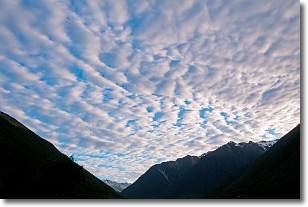Weather Alert in Delaware
Special Weather Statement issued April 29 at 3:21AM EDT by NWS Mount Holly NJ
AREAS AFFECTED: New Castle; Kent; Inland Sussex; Morris; Hunterdon; Somerset; Middlesex; Western Monmouth; Mercer; Salem; Gloucester; Camden; Northwestern Burlington; Ocean; Cumberland; Atlantic; Cape May; Southeastern Burlington
DESCRIPTION: There is an elevated risk for fire spread this afternoon across most of New Jersey and Delaware. Minimum relative humidity values will drop to around 30 percent this afternoon, and southwesterly winds will increase to 15 to 20 mph with gusts up to 30 mph. These conditions, along with the continued drying of fine fuels, could support the rapid spread of any fires that ignite, which could quickly become difficult to control. The winds will diminish tonight and the relative humidity will also increase. Outdoor burning is strongly discouraged. Be sure to properly extinguish or dispose of any potential ignition sources, including smoking materials such as cigarette butts. This forecast considers meteorological, fuel, and land conditions and has been developed in coordination with state fire officials.
INSTRUCTION: N/A
Want more detail? Get the Complete 7 Day and Night Detailed Forecast!
Current U.S. National Radar--Current
The Current National Weather Radar is shown below with a UTC Time (subtract 5 hours from UTC to get Eastern Time).

National Weather Forecast--Current
The Current National Weather Forecast and National Weather Map are shown below.

National Weather Forecast for Tomorrow
Tomorrow National Weather Forecast and Tomorrow National Weather Map are show below.

North America Water Vapor (Moisture)
This map shows recent moisture content over North America. Bright and colored areas show high moisture (ie, clouds); brown indicates very little moisture present; black indicates no moisture.

Weather Topic: What is Snow?
Home - Education - Precipitation - Snow
 Next Topic: Stratocumulus Clouds
Next Topic: Stratocumulus Clouds
Snow is precipitation taking the form of ice crystals. Each ice crystal, or snowflake,
has unique characteristics, but all of them grow in a hexagonal structure.
Snowfall can last for sustained periods of time and result in significant buildup
of snow on the ground.
On the earth's surface, snow starts out light and powdery, but as it begins to melt
it tends to become more granular, producing small bits of ice which have the consistency of
sand. After several cycles of melting and freezing, snow can become very dense
and ice-like, commonly known as snow pack.
Next Topic: Stratocumulus Clouds
Weather Topic: What are Stratus Clouds?
Home - Education - Cloud Types - Stratus Clouds
 Next Topic: Wall Clouds
Next Topic: Wall Clouds
Stratus clouds are similar to altostratus clouds, but form at a
lower altitude and are identified by their fog-like appearance, lacking the
distinguishing features of most clouds.
Stratus clouds are wider than most clouds, and their base has a smooth, uniform
look which is lighter in color than a nimbostratus cloud.
The presence of a stratus cloud indicates the possibility of minor precipitation,
such as drizzle, but heavier precipitation does not typically arrive in the form
of a stratus cloud.
Next Topic: Wall Clouds
Current conditions powered by WeatherAPI.com




